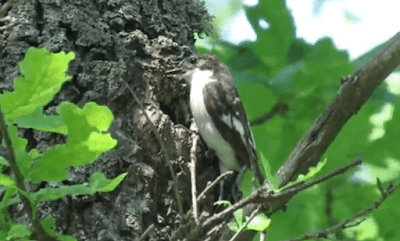Climate change is having a substantial influence on bird populations across Europe, according to bird experts. The impacts of climate change on birds are extensive and disturbing, ranging from changes in migration patterns to changes in nesting behavior.
 |
| European Pied Flycatcher |
In this article, we'll look at some of the ways that climate change is harming birds in Europe.
Impact on Bird Migration Patterns
The altering of migratory patterns is one of the most evident effects of climate change on birds. Several bird species schedule their migrations to coincide with climate variations and food availability. When temperatures rise, birds' migration habits alter sooner, with some arriving at breeding areas before the food supplies on which they rely become available. This mismatch can have major effects for bird populations, especially those that rely on certain food sources at various times of the year.
For example, a 2020 research published in the Journal of Avian Biology indicated that rising temperatures are prompting long-distance migrating birds like the pied flycatcher and common cuckoo to arrive in Europe earlier than usual. As a result, they may not be able to feed themselves and their young.
Breeding Behavior Alterations
Several bird species' mating habits are changing as a result of climate change. Higher temperatures can cause birds to reproduce earlier in the year, upsetting the delicate balance between breeding and food availability for their young. Moreover, extreme weather events such as droughts, floods, and heatwaves can induce nest failures and impair bird populations' overall reproductive performance.
The European Robin, for example, is known to breed sooner in response to higher temperatures, but it may be unable to adapt the time of its breeding to reflect changes in food supply. As a result, the young may hatch before their principal food sources are ready, resulting in lower survival rates.
Distribution of Bird Species
Climate change is also influencing bird species distribution throughout Europe. When temperatures rise, some species' ranges migrate northward, while others relocate to higher elevations to avoid the heat. This can result in resource competition and potential confrontations with other bird species.
The territory of the great tit, a common bird in Europe, has migrated northward in recent decades as temperatures have risen. This has resulted in greater resource competition in regions where the great tit is now present, potentially affecting other bird species.
Food Resource Availability
Climate change is also having an impact on the availability of food for birds in Europe. Variations in precipitation patterns can affect the time and location of insect hatching and plant development, affecting bird food supply. Moreover, rising temperatures are forcing many insect populations to spread their ranges, potentially leading to pest outbreaks that harm agriculture and forests.
For instance, the oak processionary moth, a pest that may harm oak trees, has increased its range northward in Europe as temperatures have risen. This has resulted in increased damage to oak trees, as well as possible consequences for bird species that rely on them for food and habitat.
Mitigation Measures
Notwithstanding these obstacles, we can take efforts to assist alleviate the effects of climate change on birds in Europe. Birds rely on healthy ecosystems for food, housing, and nesting, therefore protecting and restoring habitat is vital. Also, limiting greenhouse gas emissions can assist to decrease the rate of climate change and provide more time for bird populations to adjust to changing conditions.
Additionally, encouraging sustainable land-use practices such as organic farming and minimizing pesticide usage can assist to preserve healthy ecosystems and increase bird food availability.
Finally, the consequences of climate change on European birds are profound and far-reaching. The effects of climate change on birds, from shifting migration patterns to modifying mating behavior, are a strong indication that human activities are affecting the natural world. As a bird expert, I hope that increasing knowledge and action will aid in mitigating the consequences of climate change on birds and other species throughout Europe and the world.
As we learn more about the consequences of climate change on birds, it is critical to remember that these effects are not limited to a particular species or location. Climate change is a worldwide problem, and we must all work together to decrease our carbon footprint and safeguard the natural world.
We can help limit the effects of climate change on birds and other species by working together to promote sustainable behaviors and reduce greenhouse gas emissions, ensuring that future generations may enjoy the beauty and diversity of the natural world.
